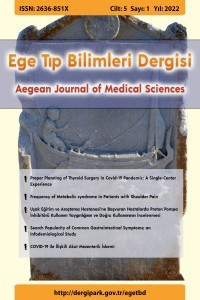How To Manage Extravasation Of Ibandronic Acid: A Case Report
Extravasation, ibandronic acid, management, prevention
How To Manage Extravasation Of Ibandronic Acid?: A Case Report
Extravasation, ibandronic acid, management, prevention,
___
- 1. Rossini, M., et al., Osteoporosis treatment: why ibandronic acid? Expert Opin Pharmacother, 2013. 14(10): p. 1371-81.2. Guay, D.R., Ibandronate, an experimental intravenous bisphosphonate for osteoporosis, bone metastases, and hypercalcemia of malignancy. Pharmacotherapy, 2006. 26(5): p. 655-73.3. Rose, R.F., R & Crawford-Sykes, Annette & Venugopal, R & Wharfe, Gilian & Arscott, George., Extravasation injuries. The West Indian medical journal, 2008. 57(40): p. 7.4. Lewiecki, E.M. and P.D. Miller, Renal safety of intravenous bisphosphonates in the treatment of osteoporosis. Expert Opin Drug Saf, 2007. 6(6): p. 663-72.5. Davis, S., et al., A systematic review and economic evaluation of bisphosphonates for the prevention of fragility fractures. Health Technol Assess, 2016. 20(78): p. 1-406.6. Veszelyne Kotan, E. and A. Meszaros, [Therapeutic practice of bisphosphonate use and related pharmaceutical issues I]. Acta Pharm Hung, 2016. 86(1): p. 13-22.7. Study of Possible Correlation Between Injection-Site-Extravasation and Ibandronic Acid. Available from: http://factmed.com/study-ibandronic%20acid-causing-injection-site-extravasation.php.8. Zoledronic acid and Extravasation. Available from: https://www.ehealthme.com/ds/zoledronic-acid/extravasation/ 9. Menssen, H.D., et al., Effects of long-term intravenous ibandronate therapy on skeletal-related events, survival, and bone resorption markers in patients with advanced multiple myeloma. J Clin Oncol, 2002. 20(9): p. 2353-9.10. Diel, I.J., et al., Improved quality of life after long-term treatment with the bisphosphonate ibandronate in patients with metastatic bone disease due to breast cancer. Eur J Cancer, 2004. 40(11): p. 1704-12.
- ISSN: 2636-851X
- Yayın Aralığı: Yılda 3 Sayı
- Başlangıç: 2018
- Yayıncı: Uşak Cerrahi Derneği
D VİTAMİN EKSİKLİĞİNİN KADIN CİNSEL FONKSİYONLARINA ETKİSİ
Seher KAYALI, Ali Yavuz KARAHAN, Neslihan SORAN, Almula DEMİR POLAT, Banu ORDAHAN, Aynur BAŞARAN, Mehmet Serdar AKKUŞ
Sirozlu Hastalarda Kan Lipid Düzeyleri
Gonartrozlu Hastalarda Eklem Laksitesi Değerlendirmesi; Kesitsel bir çalışma
Aliye ARSLAN TANYELİ, Zeliha ÜNLÜ
Çiğdem ÖZTÜRK TURAN, Ender UYSAL
How To Manage Extravasation Of Ibandronic Acid: A Case Report
Ender SALBAŞ, Ali Yavuz KARAHAN, Levent TEKİN, Banu ORDAHAN, Sertaç KETENCİ
Çocukluk çağı zehirlenme olgularının epidemiyolojik ve demografik özelliklerinin incelenmesi
Şenay GÜVEN BAYSAL, Feyza Mediha YILDIZ
Levotiroksin Sodyum İntoksikasyonu: Olgu Sunumu
Şenay GÜVEN BAYSAL, Nurcan BULUR
Tüberküloz menenjitine ikincil akut başlangıçlı işitsel hallusinasyonlar: Bir vaka sunumu
Okan EKİNCİ, Gonca OĞUZ KUŞÇCUOĞLU, Betül Aydın, Aslı Ekinci
Şizofrenili Olgularda Düşük Dereceli İnflamasyon, Lipid Düzeyleri ve Özkıyım Arasındaki İlişki
